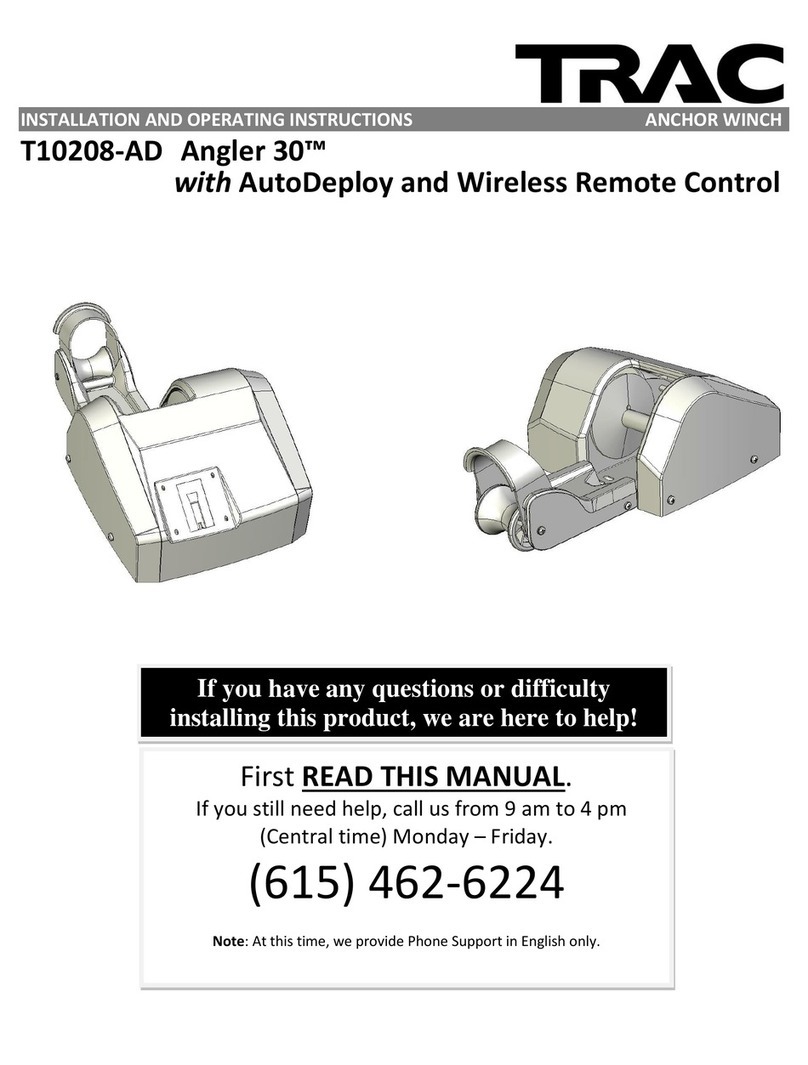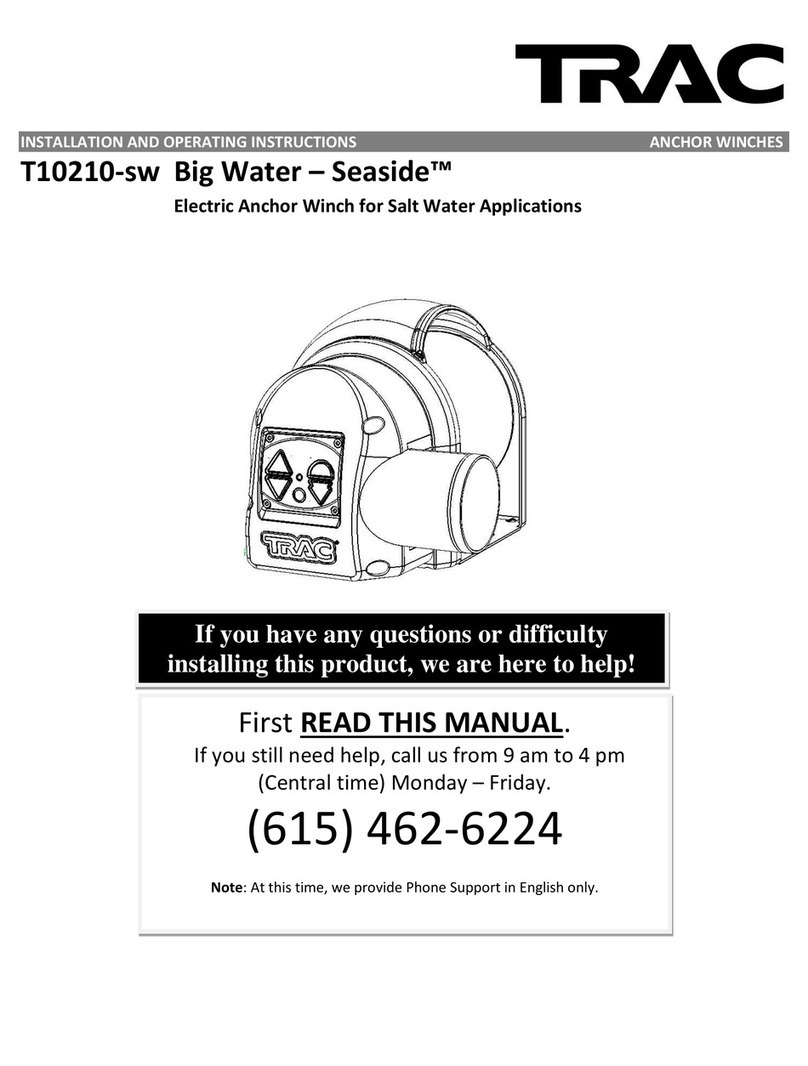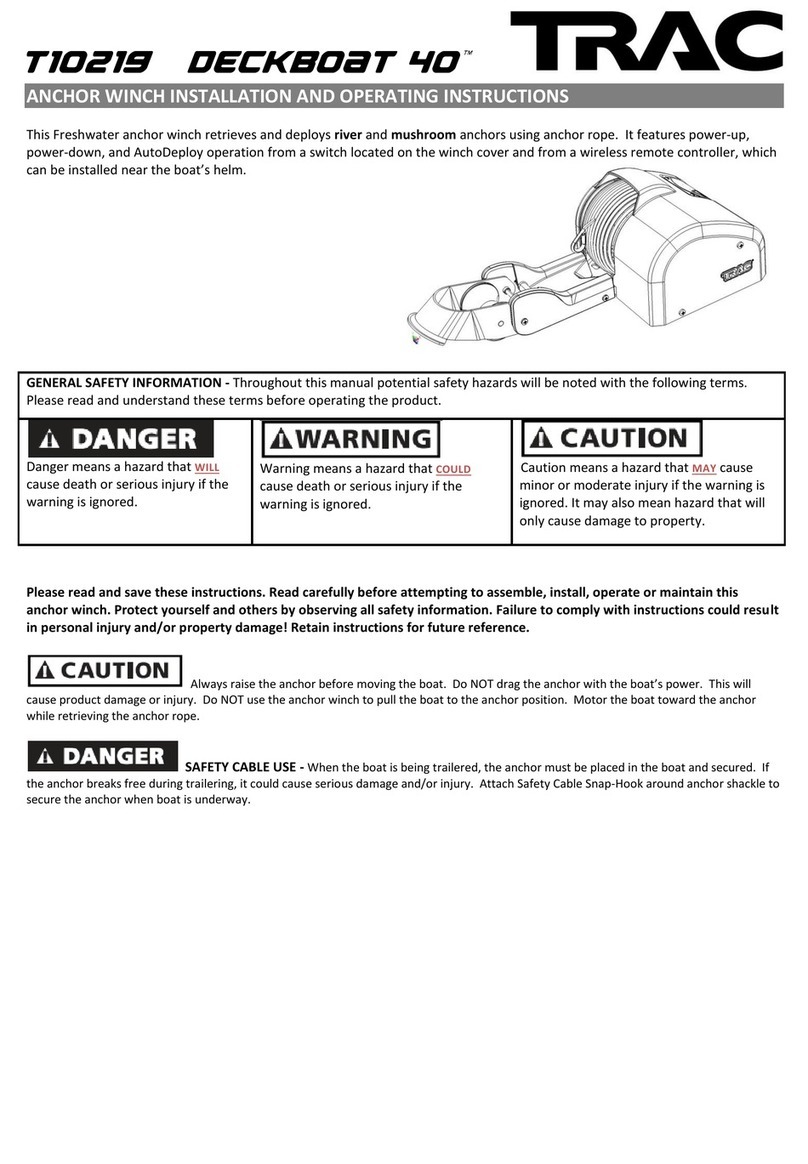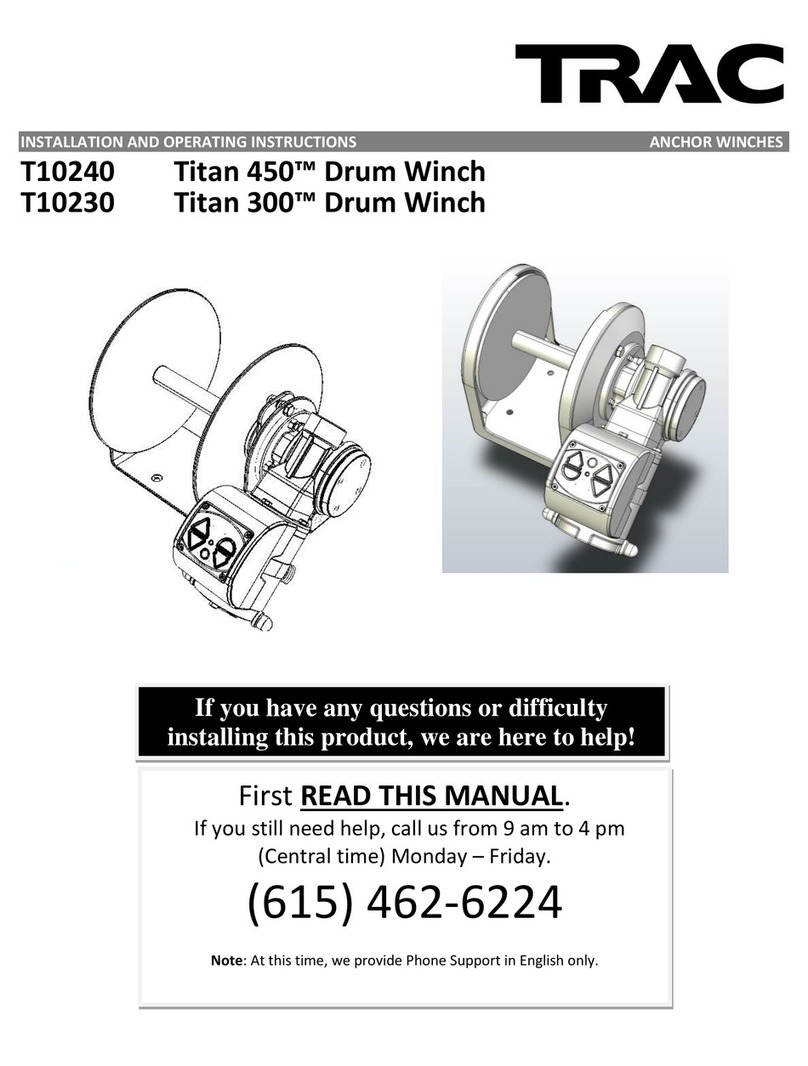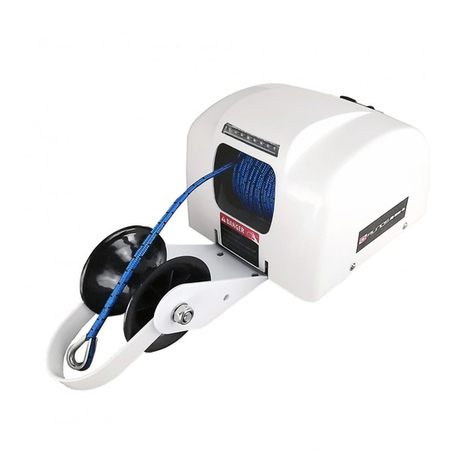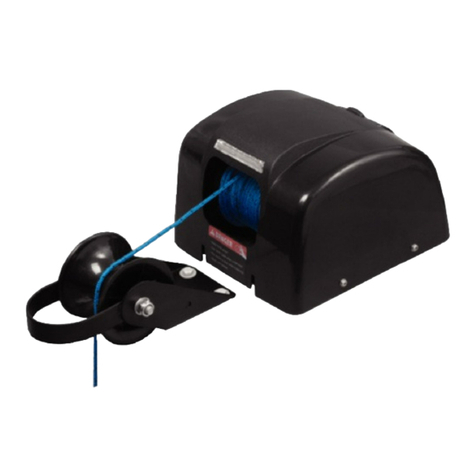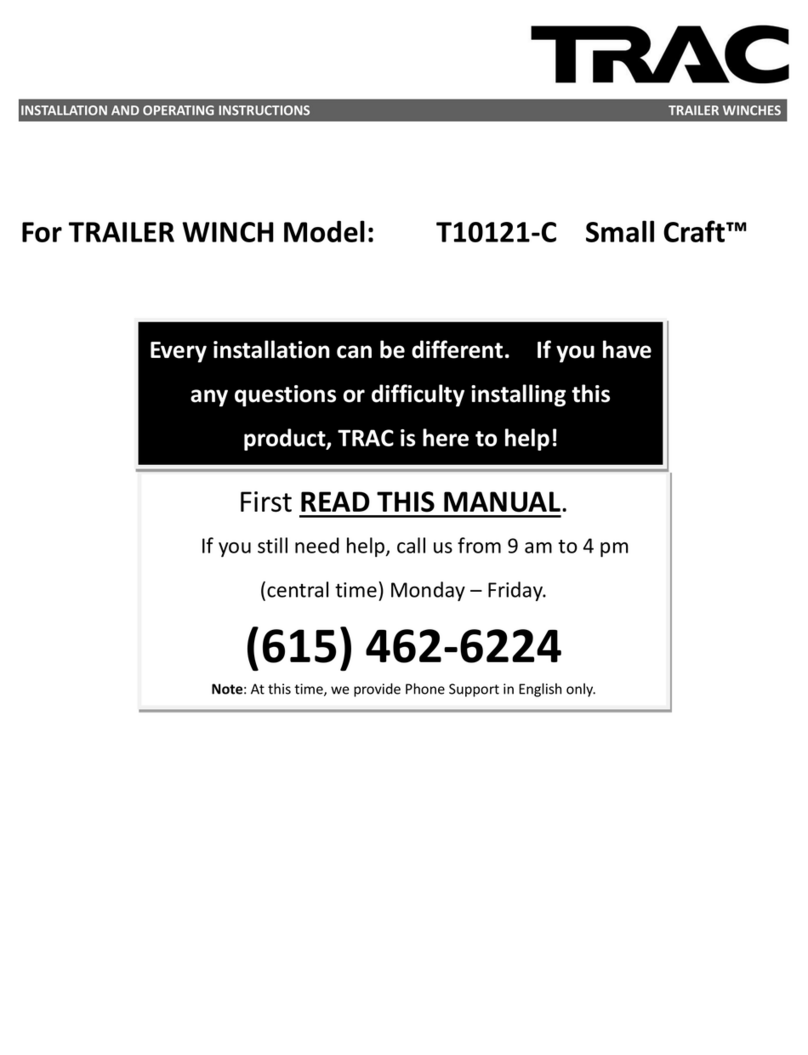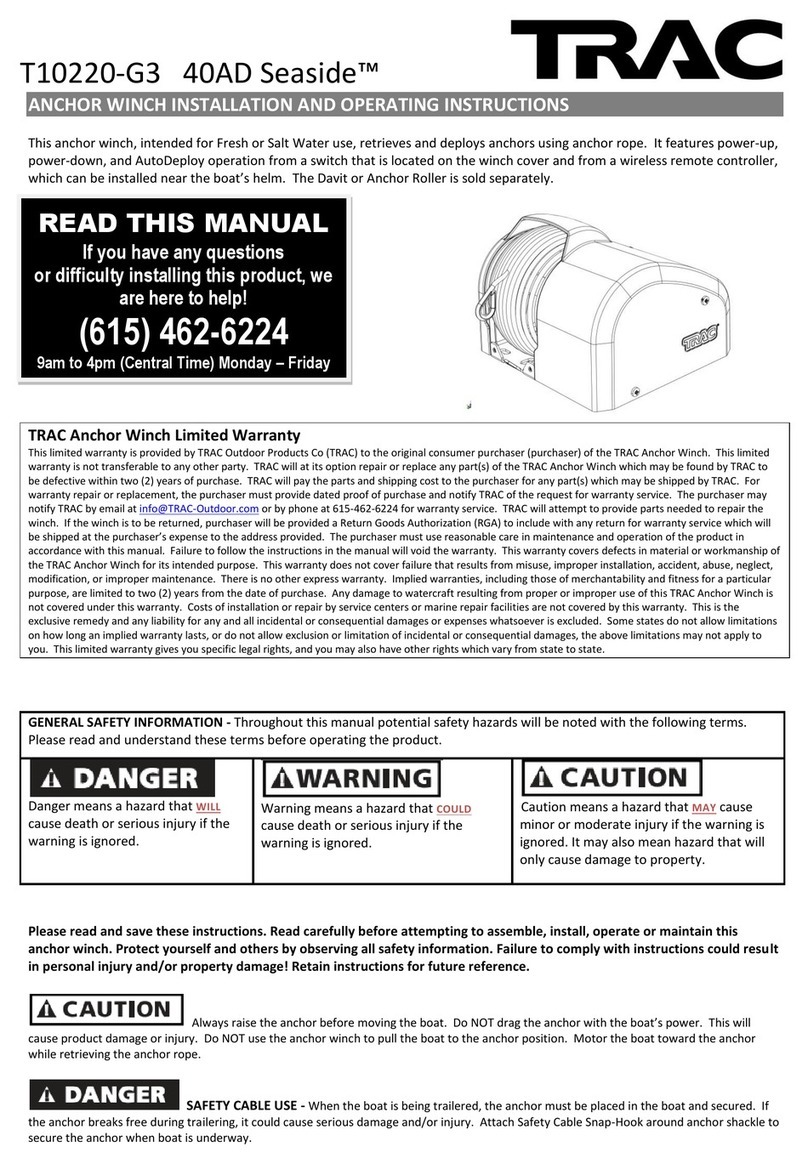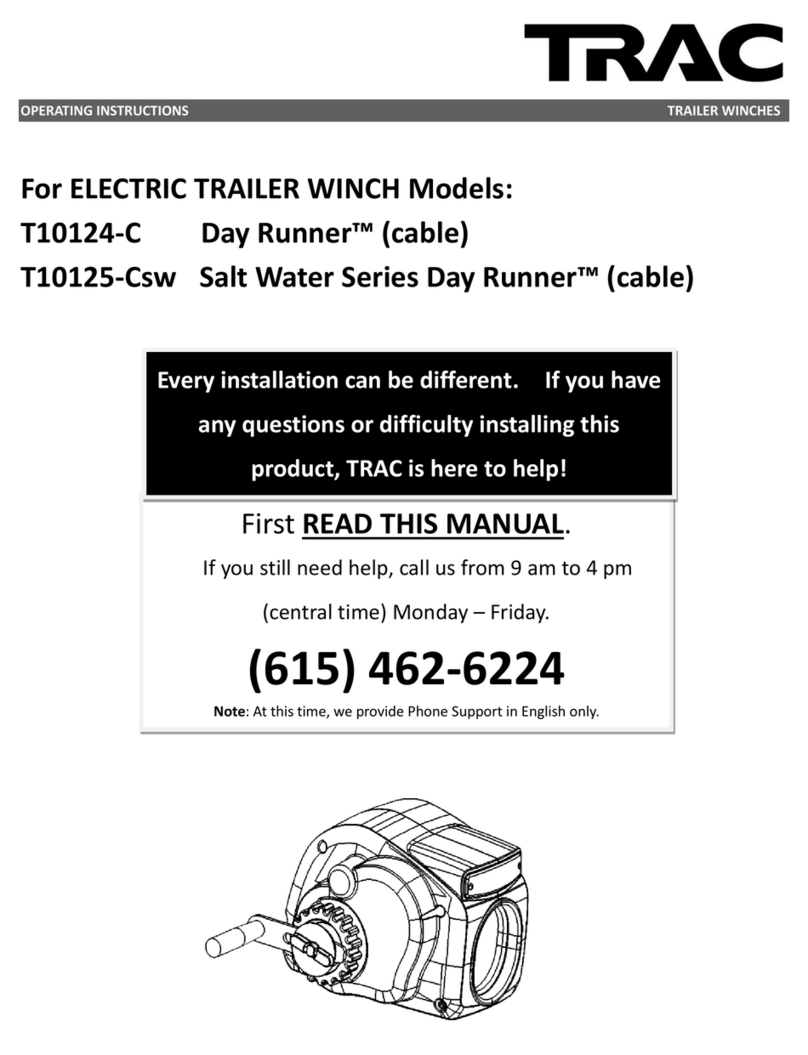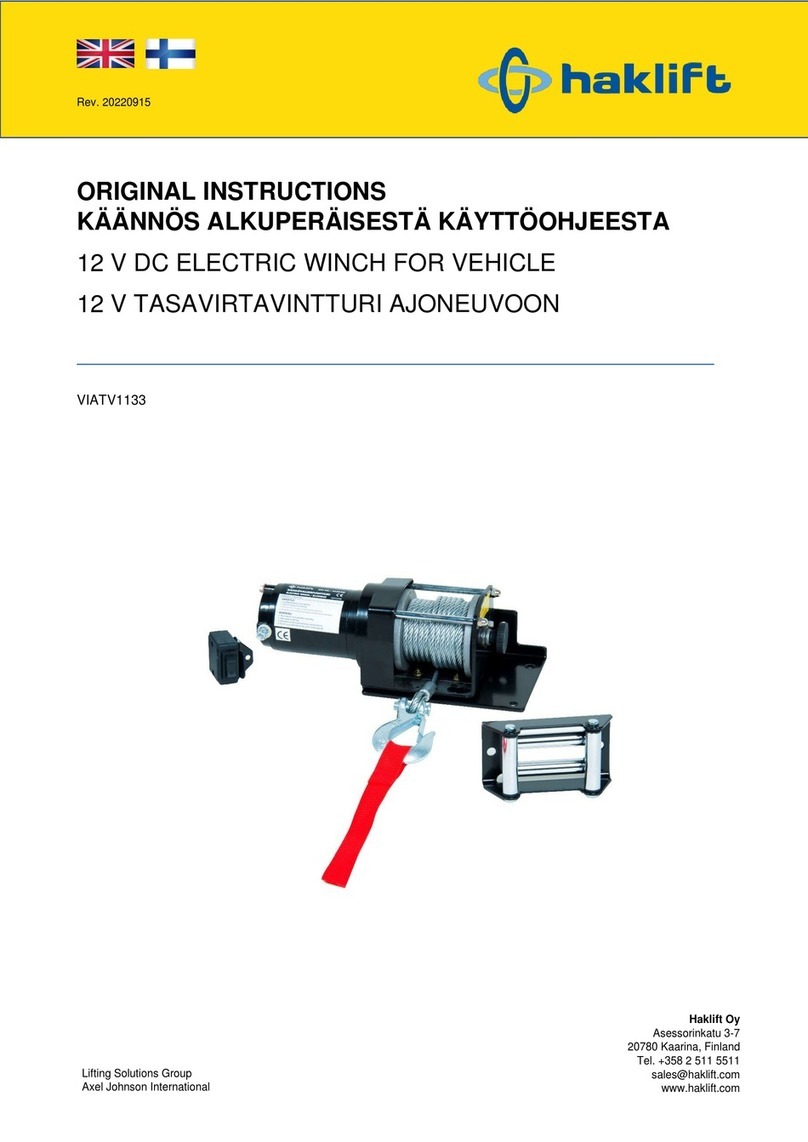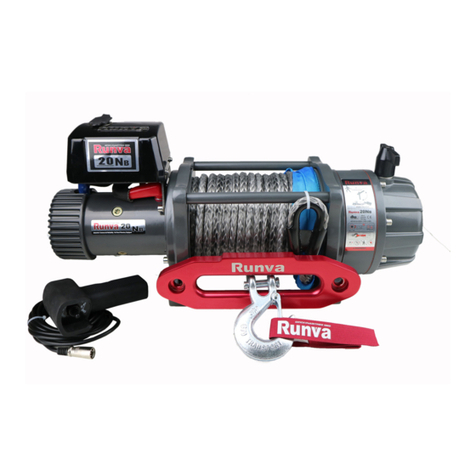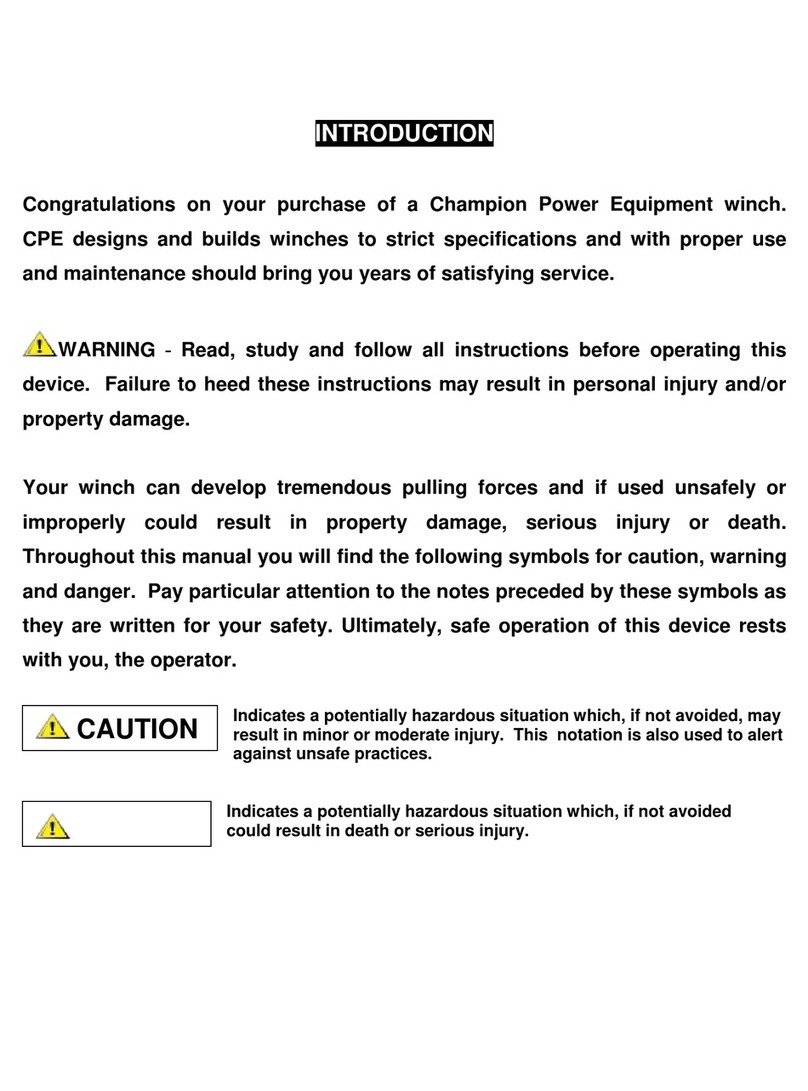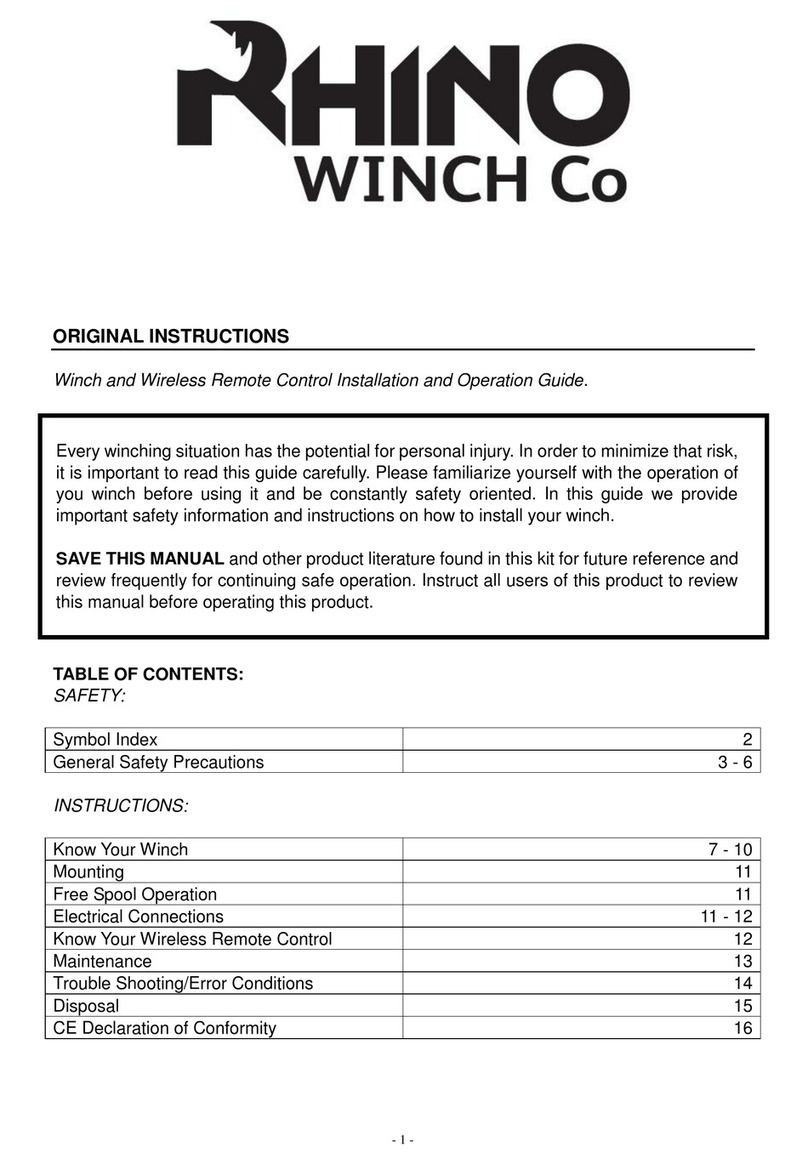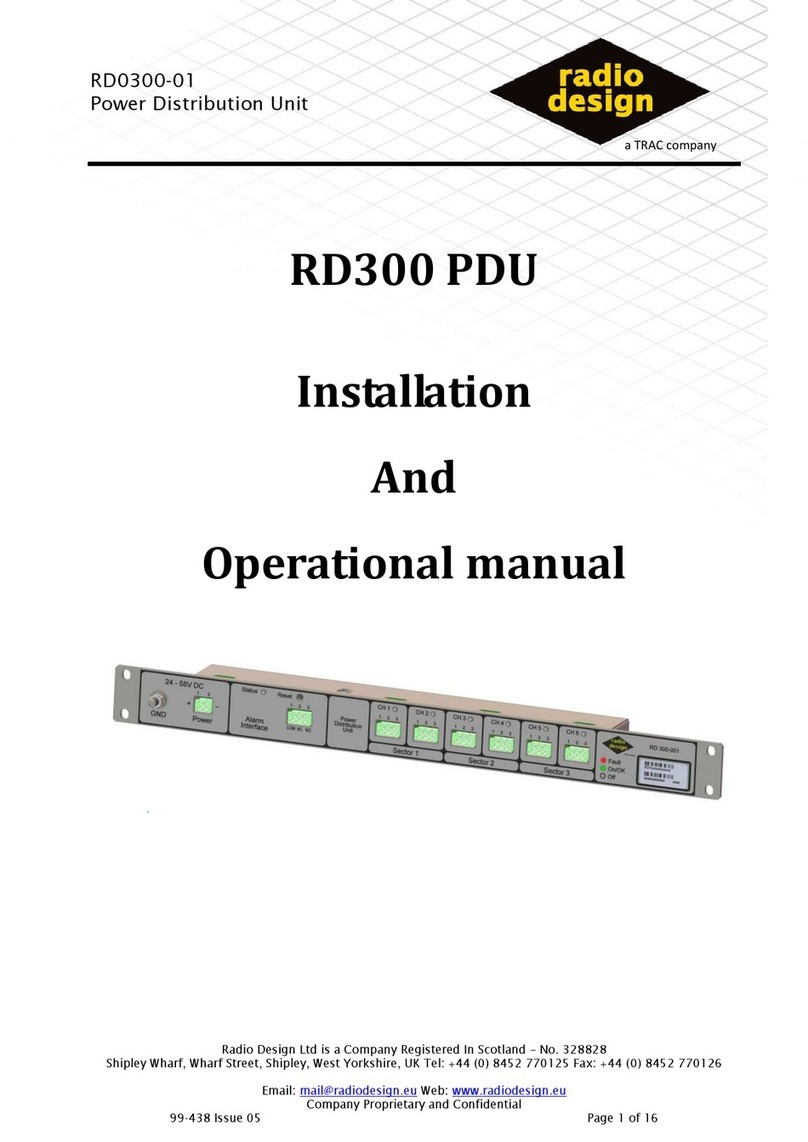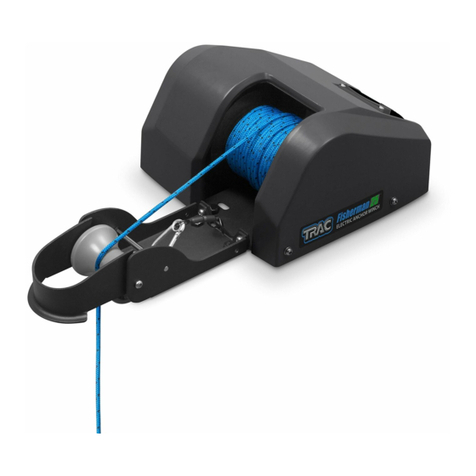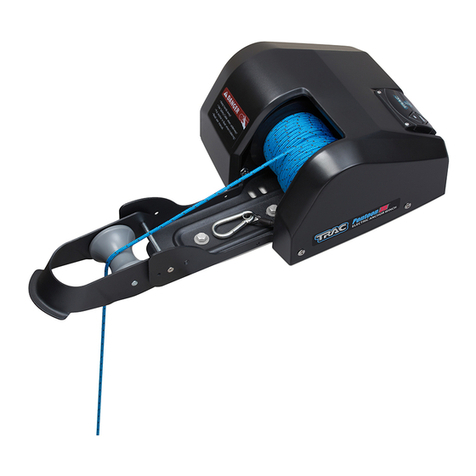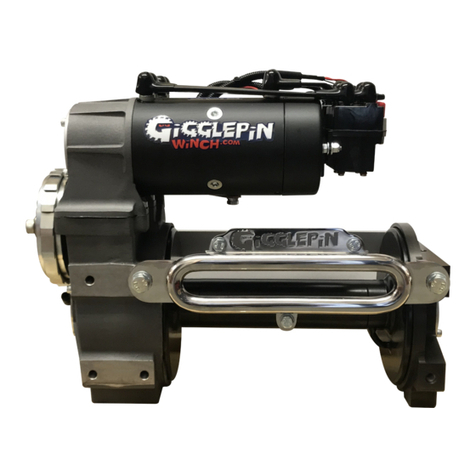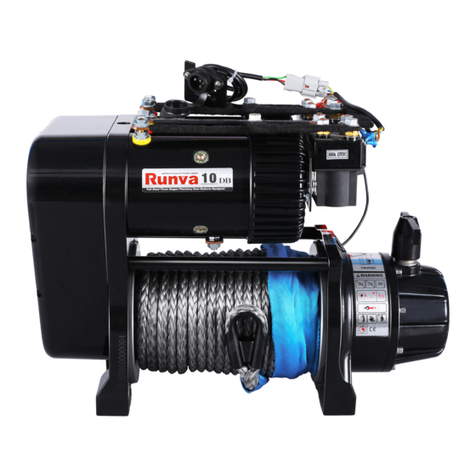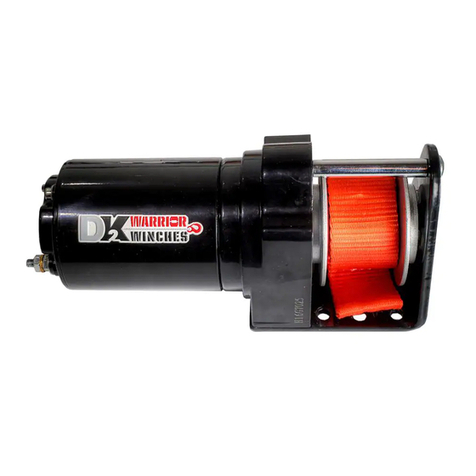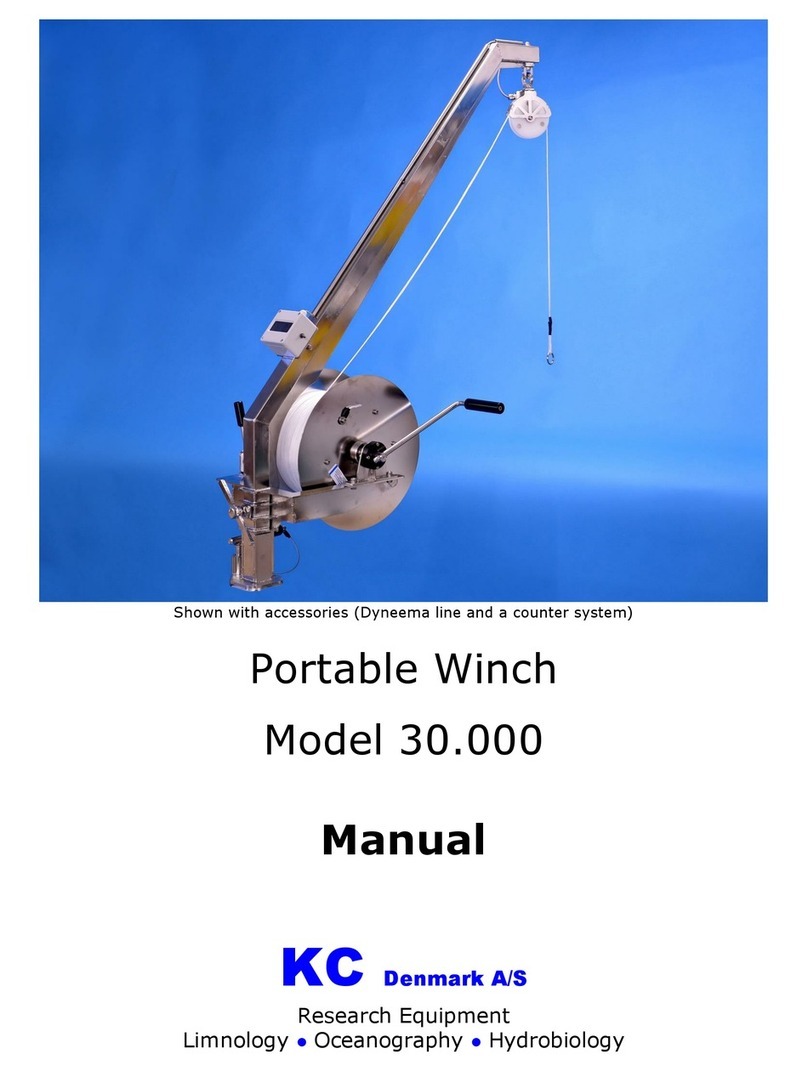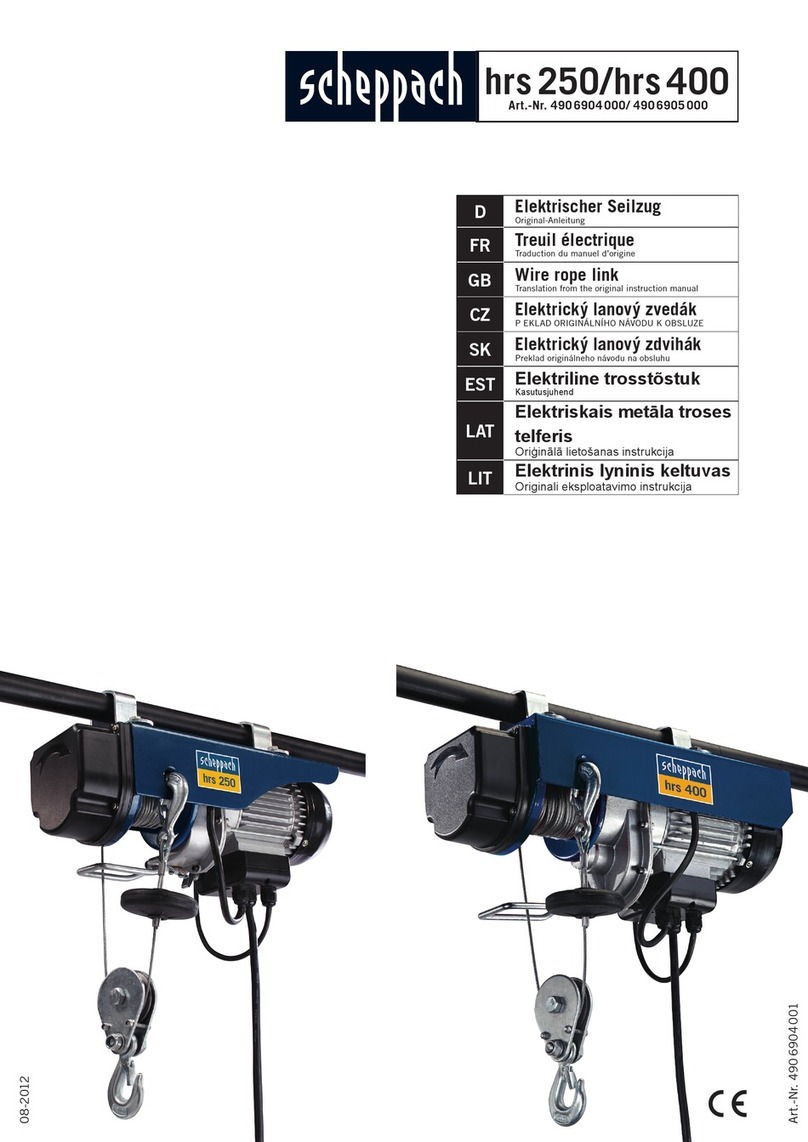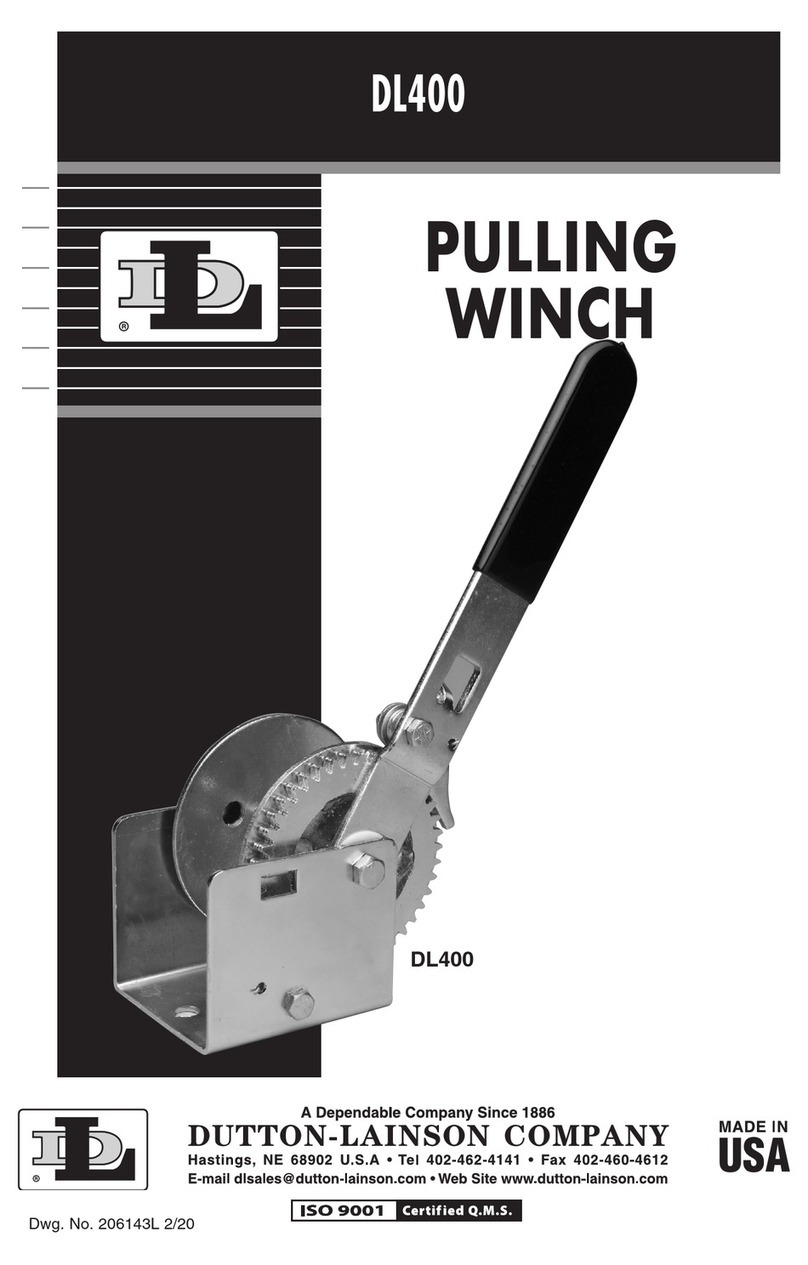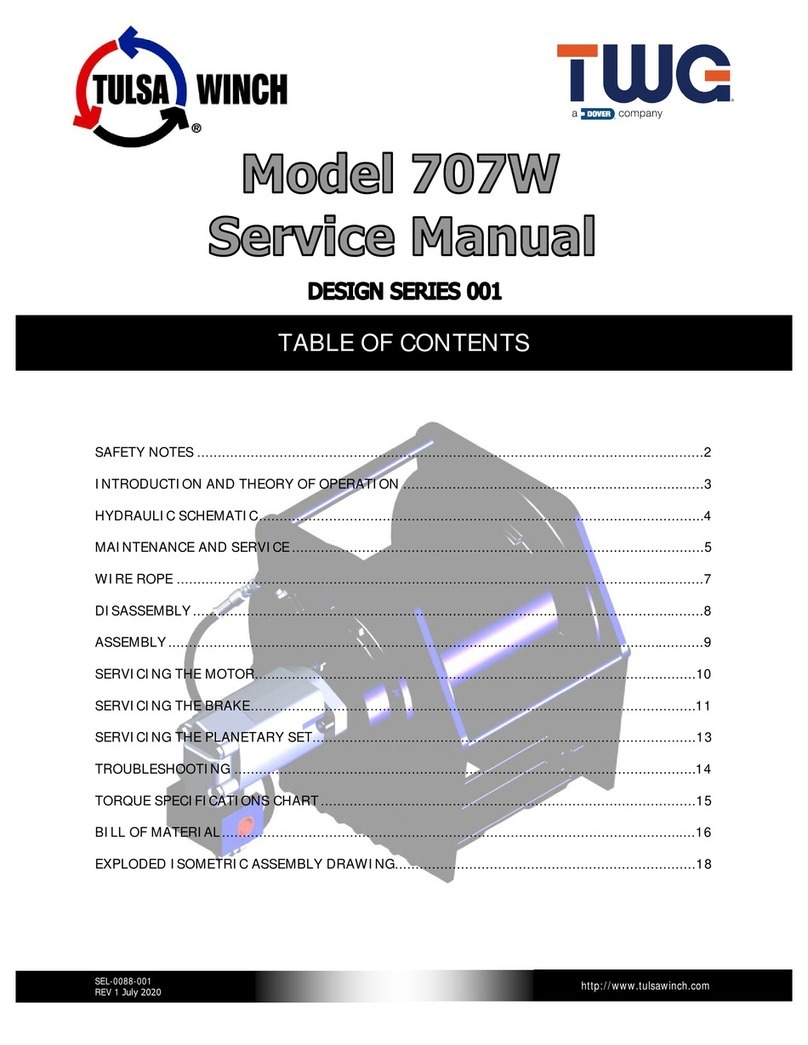
The winch comes with 9' (2.7m) of battery wire suitable to reach the rear of the tow vehicle or nearby battery. Vehicle Wiring Kit
(item T10135) can be purchased separately. When the tow vehicle is running, its alternator/generator provides optimum voltage and
current which will allow the winch to reach its maximum pulling power.
Winch Installation
Install the electric winch in the same location as the existing
hand winch. Remove the hand winch from the winch stand.
Install the electric winch unit using three (3) 3/8" (10mm)
Grade 5 machine bolts, nuts and washers (included). If the
winch stand does not have three holes, you may have to drill
two holes for the two bolts which are located at the rear-end
(end that has a printed label). Locate the three mounting bolts
that came in the box. Remove the nut, and 2 washers from
the bolts. Adjust retaining ring by unscrewing it to allow about
1/4 inch (6.5mm) of space between the retaining ring and
head of bolt. Insert head of bolt into keyhole on bottom of
winch. Slide bolt head along the slot. Two bolts are to be
located at the rear-end of the winch (below the label). Tighten
retaining ring by threading the ring tight to the bottom of the
winch. This will hold the bolts while you lower the winch onto
the trailer's winch stand. Align the bolts with the bolt holes on
the winch stand. Install flat washer, lock washer and nut.
NOTE: The cable (as it exits the winch) and the bow eye on the
boat should be at the same height when the boat is in the
fully loaded position on the trailer. If the bow eye is too high,
extra stress is exerted on the boat's bow eye and stern. If the
winch is too low, it will pull the boat into the bunks instead of
along them. To achieve equal height of the winch and boat,
raise or lower the winch stand. In most cases, the trailer
manufacturer will have an adapter or optional winch stands.
TRAC does not offer winch stands due the great variety of
trailers.
Eight (8) inches (20cm) clearance is required between the
winch and bow eye to prevent the cable hook from being
drawn into the winch drum. If necessary, relocate winch stand
or bow stop to obtain clearance.
To permanently wire the winch, refer to figure below and
follow the outlined procedures.
1. Attach circuit breaker to positive (+) battery post.
Never attach circuit breaker to battery negative.
2. Run positive wire (not included) through or under the
vehicle to from the battery to the rear of the vehicle. Attach at
suitable intervals to the vehicle frame. Use nylon wire ties
(not supplied) to secure the wire to the vehicle frame about
every 12 inches (30.5cm). Avoid sharp edges or places where
the wire might rub.
3. Attach negative wire (ground wire) to the vehicle frame
using a bolt and lock nut. Before attaching the ground wire,
clean the metal with wire brush or sandpaper. As an option
the negative wire can be run (along with positive wire) to
battery negative terminal.
4. At rear of vehicle, install a suitable 12v socket, such as
used for a trolling motor. Install the socket at rear of the
vehicle and plug at end of the winch battery cable. Optional
Wiring - An auxiliary battery may be used and can be installed
on the trailer, or secured in the bed of a truck. If auxiliary
battery is used, it should be a Marine battery. Batteries not
designed for deep discharge (deep cycle) may not provide
current required.





















